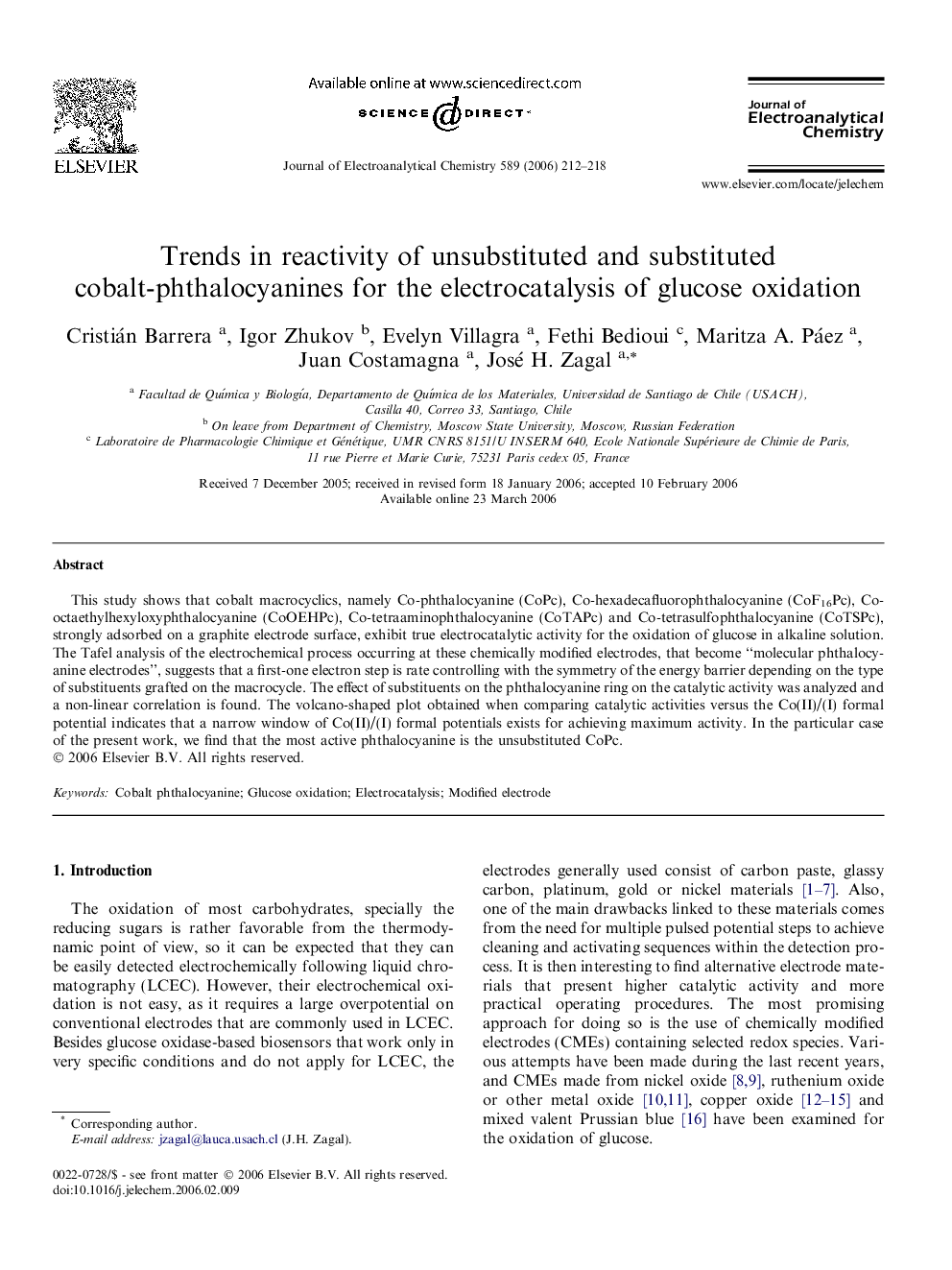| Article ID | Journal | Published Year | Pages | File Type |
|---|---|---|---|---|
| 221320 | Journal of Electroanalytical Chemistry | 2006 | 7 Pages |
This study shows that cobalt macrocyclics, namely Co-phthalocyanine (CoPc), Co-hexadecafluorophthalocyanine (CoF16Pc), Co-octaethylhexyloxyphthalocyanine (CoOEHPc), Co-tetraaminophthalocyanine (CoTAPc) and Co-tetrasulfophthalocyanine (CoTSPc), strongly adsorbed on a graphite electrode surface, exhibit true electrocatalytic activity for the oxidation of glucose in alkaline solution. The Tafel analysis of the electrochemical process occurring at these chemically modified electrodes, that become “molecular phthalocyanine electrodes”, suggests that a first-one electron step is rate controlling with the symmetry of the energy barrier depending on the type of substituents grafted on the macrocycle. The effect of substituents on the phthalocyanine ring on the catalytic activity was analyzed and a non-linear correlation is found. The volcano-shaped plot obtained when comparing catalytic activities versus the Co(II)/(I) formal potential indicates that a narrow window of Co(II)/(I) formal potentials exists for achieving maximum activity. In the particular case of the present work, we find that the most active phthalocyanine is the unsubstituted CoPc.
